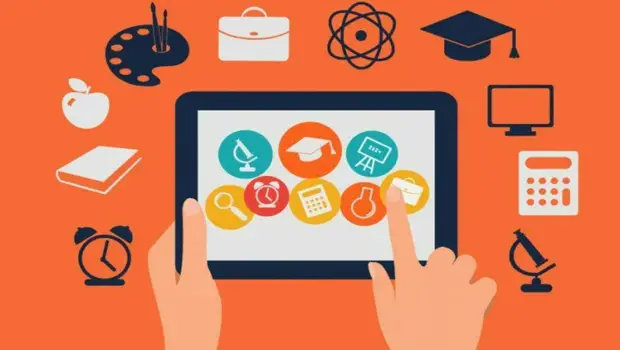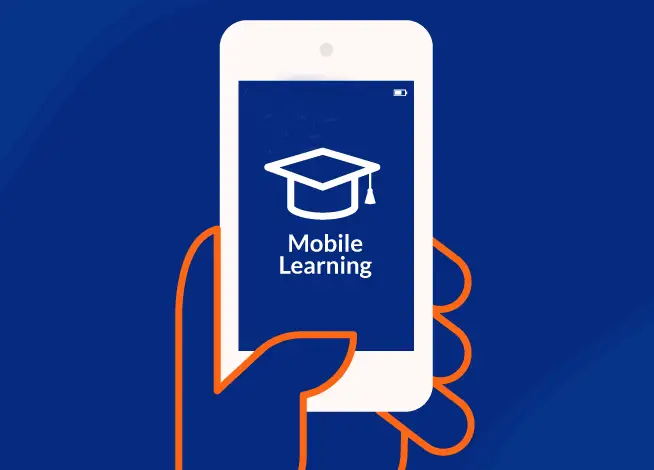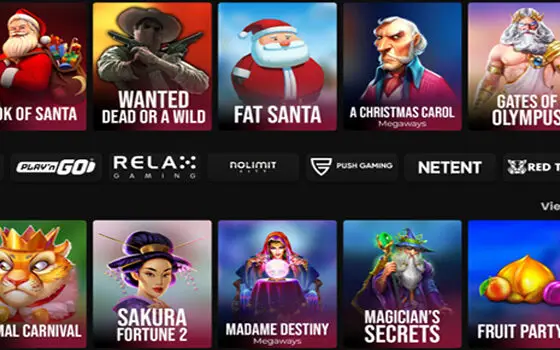Mobile apps are increasingly seen as the future of learning. The popularity of mobile devices and the widespread adoption of mLearning or mobile learning is gaining momentum.
In this article, let’s look at 10 reasons to include learning apps in your learning strategy.
Why you should use mobile apps in your learning strategy
Before we delve into the reasons why you should integrate learning apps into your learning strategy, let’s look at 3 important basics: what, why, and how.
- What: what are mobile learning apps?
- Why: why should you invest in them?
- How: exactly how can you integrate into your learning strategy?
What are mobile learning apps?
Mobile apps are a learning delivery format designed for learners to view learning materials on mobile devices offline. Although you must first download to your device using an Internet connection, you can later access the course without Internet access. Internet access is also necessary when it comes to tracking student progress through learning management systems.
People are increasingly turning to mobile apps, and the yearly number of downloads proves it. According to statistics, the number of learning apps downloaded worldwide exceeds 2.6 million! Not surprisingly, learning apps are an area that should be invested in.
What are the benefits of using mobile learning apps?
There’s a reason more and more companies are investing in mobile learning technology and mobile app development year after year. Mobile apps are one of the most popular mobile learning trends on the market today.
This format has many advantages:
- Ideal for people seeking information and learning on the go and traveling.
- Suitable for both online and offline viewing.
- Very popular among today’s generation.
- Promotes higher completion rates.
- Provides access to timely information.
- Ideal for supporting efficiency and productivity.
How to use mobile apps for learning to enhance an existing learning strategy?
Mobile apps are good for both formal and informal learning. They serve as excellent learning vehicles, offering a small snippet of formal training or as a supplement to existing training.
When it comes to informal learning, mobile apps are an ideal platform to support performance. They can be used as performance support tools and can be embedded into students’ workflow. If they are available to learners on their mobile devices, they can be used to get timely information and support in the workplace.
There are many ways to integrate learning apps into your instructional strategy. Specifically:
For introductory training (formal training)
Mobile apps can be used for formal learning in the form of short checklists that can be part of a learning trajectory.
As a supplement to formal learning
- Serve as a pre-and post-assessment for formal learning (online or blended).
- Can also be used to demonstrate videos, examples, and scenarios to reinforce learning.
Why are mobile learning apps suitable for your learning strategy?
Here are 10 reasons why mobile apps are perfect for your learning strategy:
1. Flexibility of use (for students)
According to a survey, people spend an average of 30 hours per month on mobile apps. They have become an integral part of our lives because of the flexibility and ease of finding the information they offer. Mobile app capabilities can be used to educate students even when they are not connected to the Internet.
2. High completion rates
The anytime, anywhere learning opportunities offered by mobile learning technology and mobile apps help students learn when they “want” rather than “need” to, resulting in higher completion rates.
3. Engagement
If you use a smartphone, you should know that almost everything you do – texting someone, looking for a coffee shop nearby, getting the daily news, etc. – is done through apps. You’ve given up on traditional text messaging and switched to messaging on WhatsApp for the simple reason that it’s much more live and engaging and has lots of features.
Mobile app formats and mobile learning technologies are markedly different from traditional e-learning. They provide a very high involvement of students, thus increasing the efficiency of learning material memorization and retention.
4. Targeting the modern generation
As mentioned above, people spend 30 hours each month on mobile apps. When it comes to today’s younger generation, the number of hours spent on mobile apps soars to 90. They love mobile apps. So if you want to create engaging learning for them, you just have to have a mobile app.
5. Ease of updates
Mobile apps are extremely user-friendly and offer organizations the flexibility to easily update when needed.
6. Enable modern approaches to learning
From social media to your favorite game on the mobile device, they are all mobile apps. Here’s a tip to enhance your learning with mobile apps – leverage trends such as microlearning, social learning, and gamification.
7. Flexible to different learning needs
You can create mobile learning apps to meet different learning needs, including compliance training, soft skills development, etc. There are many tools that make studying easier. With their help, you can practice skills in various subjects and even find an assistant who will write an essay for me.
8. Implement well to support efficiency and productivity
Developers design learning apps to provide “just-in-time” information, making them ideally suited to support efficiency. Moreover, they can directly impact the use of acquired knowledge in the workplace.
9. Serve as excellent supplements to blended or formal training
You can use formal or blended learning with tutorials, checklists, or other performance support tools. But supplementing your existing training with mobile apps will improve the application of what you’ve learned directly on the job.
10. Return on your investment in training
By improving learner response, learnability, and application of the knowledge and skills gained on the job, learning apps will provide a clear return on investment.
As a conclusion
Technology and mobile apps have changed the world of education. They allow students to grow and develop, learn creatively and get all the information they need in a convenient way.
Surely the 10 reasons discussed above for using mobile apps in your teaching will allow you to rethink your learning strategy and add an effective and simple tool to it.



























